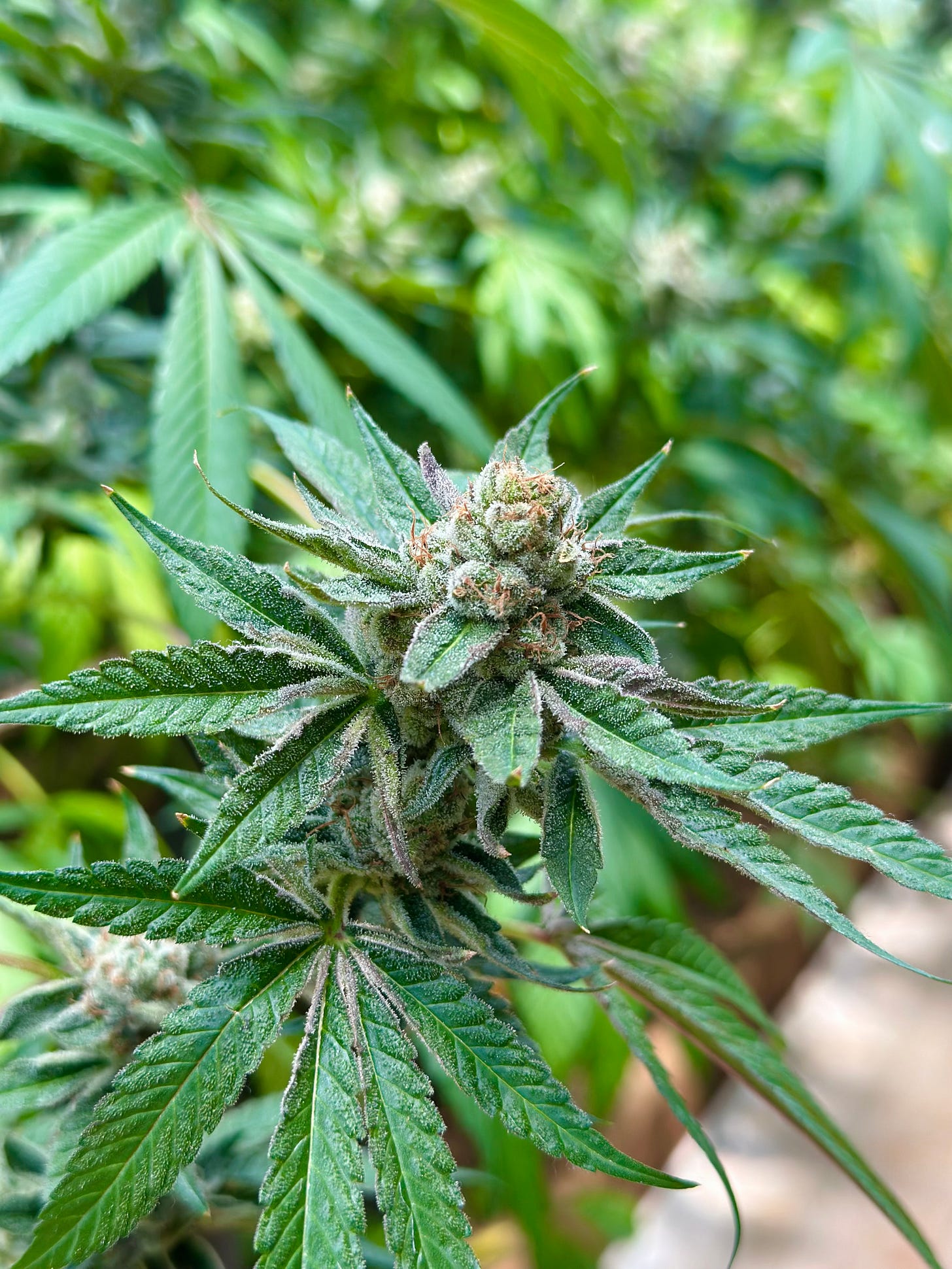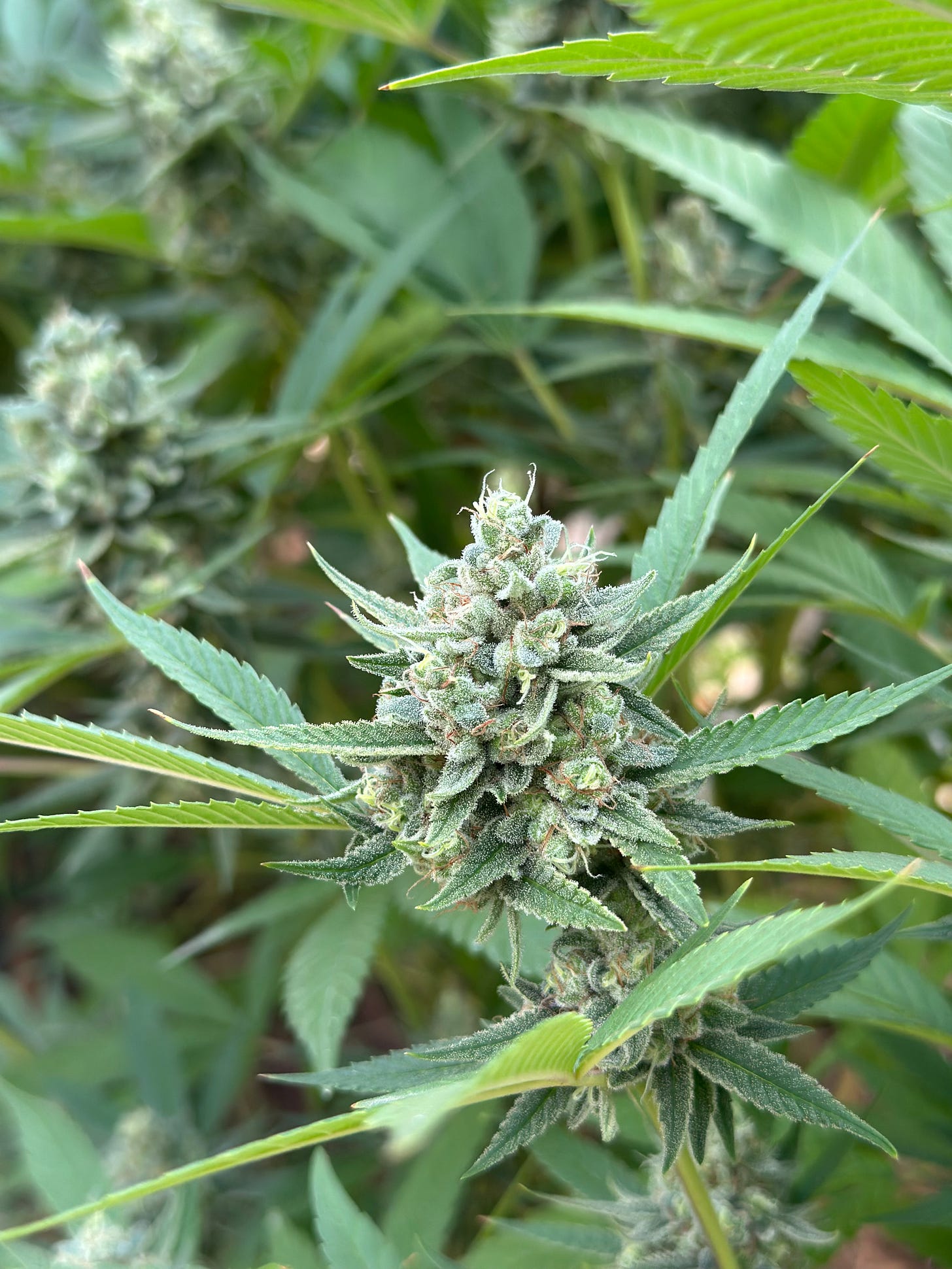The Entourage Effect | AusCannaReviews
This month, we’re taking a deeper dive into the Entourage Effect. Looking back, this probably would have been the perfect starting point for my educational Mondays, as the Entourage Effect is definitely a foundational topic for understanding cannabis. Better late than never, right?
The cannabis plant is a rich source of biologically active compounds, including cannabinoids, terpenes, flavonoids, and other phytochemicals. Together, these compounds work synergistically to produce effects greater than the sum of their parts. This interaction, known as the Entourage Effect, is an essential concept in understanding the therapeutic potential of cannabis.
The term "Entourage Effect" was introduced in 1998 by researchers Raphael Mechoulam and Shimon Ben-Shabat. They proposed that cannabinoids work more effectively when combined with other plant compounds, rather than in isolation. This synergy enhances the therapeutic benefits of cannabis while modulating side effects.
Dr. Ethan Russo expanded on this concept in his 2011 review, Taming THC: Potential Cannabis Synergy and Phytocannabinoid-Terpenoid Entourage Effects. Russo emphasized that the interplay between cannabinoids and terpenes could influence outcomes ranging from pain relief to mood enhancement, supporting the notion that cannabis functions most effectively as a whole-plant medicine.

Key Components of the Entourage Effect
The Entourage Effect is especially significant in medicinal cannabis, where the objective is to enhance therapeutic benefits while reducing potential side effects. This is why full-spectrum and broad-spectrum cannabis products, which retain a diverse array of cannabinoids and terpenes, are often chosen over isolates, which contain only a single cannabinoid. By preserving the plant’s natural synergy, full- and broad-spectrum products may offer a more comprehensive and effective approach to treatment.
Cannabinoids
Cannabinoids are the primary bioactive compounds in cannabis. Over 100 cannabinoids have been identified, each contributing unique therapeutic properties. The two most well-known cannabinoids are:
THC (Tetrahydrocannabinol): The psychoactive component of cannabis responsible for its intoxicating effects. THC also provides pain relief, reduces nausea, and stimulates appetite.
CBD (Cannabidiol): A non-intoxicating compound with anti-inflammatory, anxiolytic, and neuroprotective properties. CBD is particularly valued for its ability to counteract the psychoactive effects of THC.
Other notable cannabinoids include CBG (cannabigerol), CBC (cannabichromene), CBN (cannabinol), and THCV (tetrahydrocannabivarin), each contributing distinct therapeutic effects.
Terpenes
Terpenes are aromatic compounds found in many plants, including cannabis. They give cannabis its distinctive smell and flavour while also contributing to its effects. Some common terpenes include:
Myrcene: Known for its earthy, musky scent, myrcene has sedative properties and may enhance the psychoactive effects of THC.
Limonene: A citrus-scented terpene with mood-elevating and stress-relieving effects.
Linalool: Found in lavender, linalool promotes relaxation and may complement the anxiolytic properties of CBD.
Caryophyllene: A spicy, peppery terpene that acts as a cannabinoid by interacting with CB2 receptors, contributing to anti-inflammatory effects.
Terpinolene: Recognizable by its fresh, herbal, and slightly citrusy aroma, terpinolene is often linked to uplifting, energizing effects and may also exhibit antioxidant and antimicrobial properties.
Flavonoids
Flavonoids are less well-known but play a significant role in the entourage effect. These compounds contribute to the colour and aroma of cannabis and offer potential therapeutic benefits, such as antioxidant and anti-inflammatory effects. Cannflavins, unique to cannabis, have shown promise as potent anti-inflammatory agents. (This is an area we’ll look at more next year!)
Challenges and Limitations
While the Entourage Effect holds great promise, several challenges limit its full exploration and application:
Research Barriers
Due to regulatory restrictions studying the Entourage Effect in clinical settings is difficult. Most evidence comes from preclinical studies and anecdotal reports rather than large-scale human trials. A 2021 review in the Journal of Cannabis Research highlighted the need for standardized clinical trials to validate these effects in humans.
Product Variability
Cannabis cultivars can vary significantly in their cannabinoid and terpene profiles, even among products marketed under the same name. This lack of consistency makes it difficult to predict therapeutic outcomes and underscores the importance of thorough lab testing.
Consumer Education
Many consumers are unaware of the Entourage Effect and its implications. Educating patients about the importance of full-spectrum products and terpene profiles can help them make more informed decisions.
Conclusion
The Entourage Effect represents the unique synergy between the diverse compounds in cannabis, offering enhanced therapeutic benefits and a broader range of applications. By embracing the complexity of whole-plant medicine, the cannabis industry can better serve patients and push the boundaries of what this remarkable plant can achieve.
While challenges persist in research, standardization, and education, the Entourage Effect holds immense potential. As our understanding of this phenomenon deepens, the Entourage Effect will become a cornerstone in the development and application of cannabis-based therapies, shaping how we approach personalized and effective treatments.
This substack aims to provide anecdotal information from my personal experiences in hopes it will lead to meaningful conversations between my readers and their healthcare professionals about medicinal cannabis.
I have no formal training in medicine or science. This article does not constitute medical advice.





